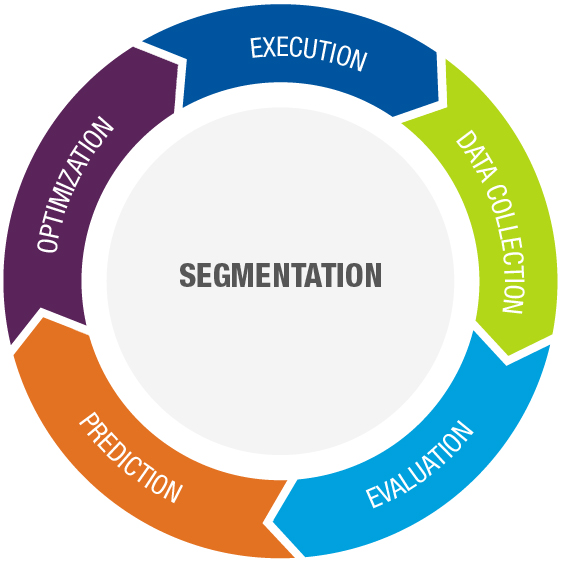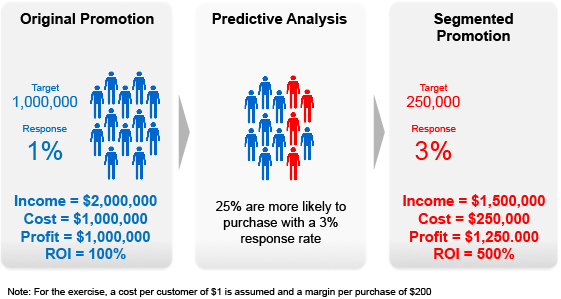- How to assess whether a promotion was effective?
- What customer segment is more likely to respond to a promotion?
- What products should be promoted, where, when and at what price?
- How does a promotion affect other products in a category? Does it cannibalize them or promote them?
- How does it impact other categories?
- What is the expected impact on profitability and / or market share?
By promotion, we refer to different stimuli and actions that are used to achieve a specific objective in a group of customers. Among the most common stimuli and actions are: samples, coupons, discounts, rebates, awards, additional product, etc. Among the most common goals is to increase sales, disseminate a new product, capture market share, build brand loyalty, among others.
According to the Promotion Optimization Institute (POI), 84% of companies believe they are getting no or marginal benefit from their promotions, and are not able to consistently distinguish between promotions with low or high performance (1). In addition, for most of them, promotional spending is the second category after cost of sales.
It is no wonder, then, that promotional decisions, which have a high monetary value, are often based on “feeling” and intuition. For companies to get better results, their processes for planning and execution of promotions must be supported by a data-driven approach, as shown in Figure 1. The proposed approach consists of six elements, each of which are described below:
Figure 1
Segmentation
Segmentation helps us to identify the factors that best describe the behavior of a group or segment of customers, which differentiate them from others. A segmentation analysis allows us to identify those customers who are most likely to respond to a promotion.
By directing the promotion at a specific segment, a higher return is obtained with less investment, such as shown in the example of Figure 2. A focused promotion is like shooting a rifle instead of a shotgun.
Figure 2
Data collection
Data collection begins with rigorous recording of the promotion data (products, prices/discounts, tactics, start/end dates, segments, etc.) and ends with the collection and consolidation of the resulting data, both internal and external (for example, Nielsen). Among the resulting data are the prices and volumes of proprietary products, prices and volumes of competitor products and market share, among others.
Evaluation
The next step is to measure the performance of the promotions executed. This post-event analysis shall consider the impact on sales of the promotional period and the immediately preceding ones (to identify effects of boosted sales), the impact on other products (cannibalization, halo effect), as well as promotional investment. The result shall be measured according to the objective of the promotion.
Prediction
Taking the historical information as a base, the performance on future promotions can be predicted. Such promotions should not only consider the individual performance of the product, but the effect of other promotions, and the impact on other products from the same category, on competing products, or even products in other categories.
To generate the prediction, consideration can be given to both internal factors (own prices, tactics, simultaneous promotions, etc.) and external factors (price competition, market share, etc.).
Optimization
While the prediction allows us to estimate the impact of individual promotions and even make simulations, it does not yield an optimal course of action or consider elements that restrict the course of action, such as the budget, the number of simultaneous promotions, etc.
Using prediction models, optimization allows us to identify the best combination of promotions that maximizes the objective (profitability, market share) within constraints on time, price and budget.
Execution
Finally, the promotion is required to be flawlessly executed. While the execution of a promotion is not the focus of this article, impeccable execution requires timeliness and effectiveness in the provision of goods and services, and the coordination of the different players involved, as well as effective management.
The main results when applying this data-driven approach are:
Reduction in the number of stock run-outs
Increase in volume and profitability due to promotional boosts
Better understanding and management of interactions between promoted and non-promoted products
Improved decision-making to determine which products should be promoted, at what cost and where
Improved relationship with business partners to create win-win promotions
In conclusion, there is great potential to use models based on data for the planning, implementation and evaluation of promotion models. Companies that use this type of analysis for decision making have an advantage over those that act based on feeling and intuition.
(1) “Charting Your Course to Trade Promotion Optimization”, Promotion Optimization Institute (POI), May 2011

